
|

|
Battle of Cloyd's Mountain, Virginia
Battle of Cloyd's Mountain
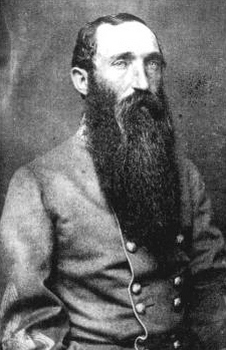
|
| Congressman Albert Jenkins |
Summary
The Battle of Cloyd's Mountain was a Union victory in western Virginia on
May 9, 1864, that allowed the Union forces to destroy several miles of rail lines and the remaining railroad bridge connecting
Tennessee to Virginia. General George Crook, commanding a Union force of some 6,100, defeated the smaller Confederate
army of 2,100 under the command of General Albert Jenkins, who was mortally wounded. Total casualties numbered more than
1,200, including 688 Union casualties, and Confederate losses of 538.
Although the New River Bridge was rebuilt within six months, the relative
ease in which Union forces were able to operate in the area concerned General Robert E. Lee, because it revealed that the
flank of the Army of Northern Virginia was vulnerable. The Confederate army responsible for southwestern Virginia would
never recover from its loss at Cloyd's Mountain, and Lee would continue to transfer the remnants of the skeleton force to
the Shenandoah Valley in hopes of defeating the advancing Union forces.
(Right) Albert Gallatin Jenkins (November 10, 1830 – May 21, 1864) was an attorney, planter,
Representative to the United States Congress, Representative to the First Confederate Congress, and a Confederate brigadier
general during the American Civil War.
Background
Brigadier General George Crook commanded the Union Army of West Virginia,
made up of three brigades from the Division of the Kanawha. When Ulysses S. Grant launched his spring offensive of 1864, two
Union armies marched towards Richmond and a third moved into the Shenandoah Valley. Crook's troops were also involved in the
offensive and began to march through the Appalachian Mountains into southwest Virginia. His objective was to destroy the Virginia
& Tennessee Railroad, working in conjunction with William W. Averell's offensive, which had similar objectives. Brig.
Gen. Albert G. Jenkins was in command of a few scattered Confederate units protecting the rail lines. Jenkins had only assumed
command a day before Crook's army began to approach the railroad.
During the 1863 Gettysburg Campaign, Jenkins' Brigade formed the cavalry
screen for Richard S. Ewell's Second Corps. Jenkins led his men through the Cumberland Valley into Pennsylvania and seized
Chambersburg, burning down nearby railroad structures and bridges. He accompanied Ewell's column to Carlisle, briefly skirmishing
with Union militia at the Battle of Sporting Hill near Harrisburg. During the subsequent
Battle of Gettysburg, Jenkins was wounded on July 2 and missed the rest of the fighting. He did not recover sufficiently to
rejoin his command until autumn. He had spent the early part of 1864 raising and organizing a large cavalry force for service
in western Virginia. By May, Jenkins had been appointed Commander of the Department of Western Virginia with his headquarters
at Dublin.
| Civil War Cloyd's Mountain Map |
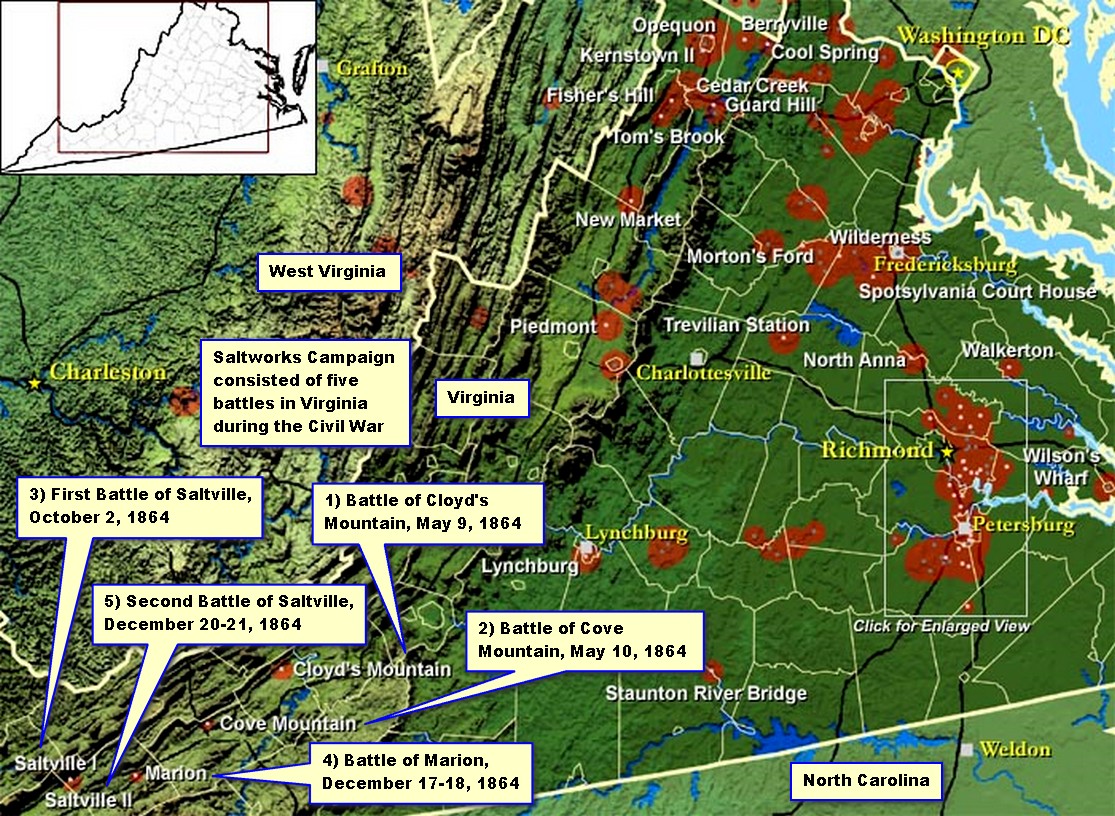
|
| Battle of Cloyd's Mountain Map |
Battle
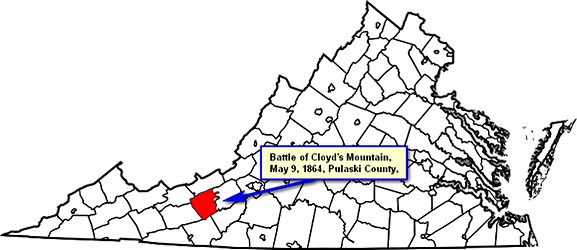
|
| Battle of Cloyd's Mountain, Pulaski County, VA. |
Jenkins, having decided to make a stand at Cloyd's Mountain, set up a strong
defensive position. When Crook arrived he decided against a frontal assault, concluding that the Confederate works were too
strong and such an attack would decimate his army. The surrounding area was heavily forested so Crook used this as cover and
swung his brigades around to the Confederate right flank.
Crook began the battle with an artillery barrage, then sent in his brigade
of green West Virginians under Colonel Carr B. White. Crook's remaining two brigades under Colonel Horatio G. Sickel and future
president Colonel Rutherford B. Hayes were to launch a frontal assault as soon as the West Virginians had gotten under way.
Serving as a major under Hayes was another future U.S. President named William McKinley. White's brigade, in its first fight
ever, advanced to within 20 yards before heavy casualties in its exposed position forced it back. Crook, moving with Hayes'
Ohio brigade, had to dismount and traverse the slopes on foot because they were so steep. Still wearing his jack boots, he
sank in a small stream the troops were crossing and his boots filled with water. Nearby soldiers rushed back to their general
and pulled him out.
Hayes' brigade spearheaded the main assault around 11 a.m. The troops fought
their way to the Confederate works and severe hand-to-hand fighting ensued. Sparks from the musket fire ignited the thick
blanket of leaves on the ground and many men from Sickel's and Hayes' brigades were pinned down and burned alive. The two
brigades began to fall back when Crook sent in two fresh regiments into Hayes' front. The West Virginians finally advanced
against the cannon that had plagued them throughout the battle and overran its crew. Now the Ohio troops began to overwhelm
the Confederate center. Jenkins tried desperately to shift troops to the threatened areas, but fell mortally wounded and was
captured by Union soldiers. His second-in-command, John McCausland, took command and conducted a rear-guard action as he withdrew
his troops.
The Battle of Cloyd's Mountain was fought on the Back Creek Farm property.
The farmhouse served that day as a hospital and as headquarters for the Union General George Crook.
| Battle of Cloyd's Mountain Map |
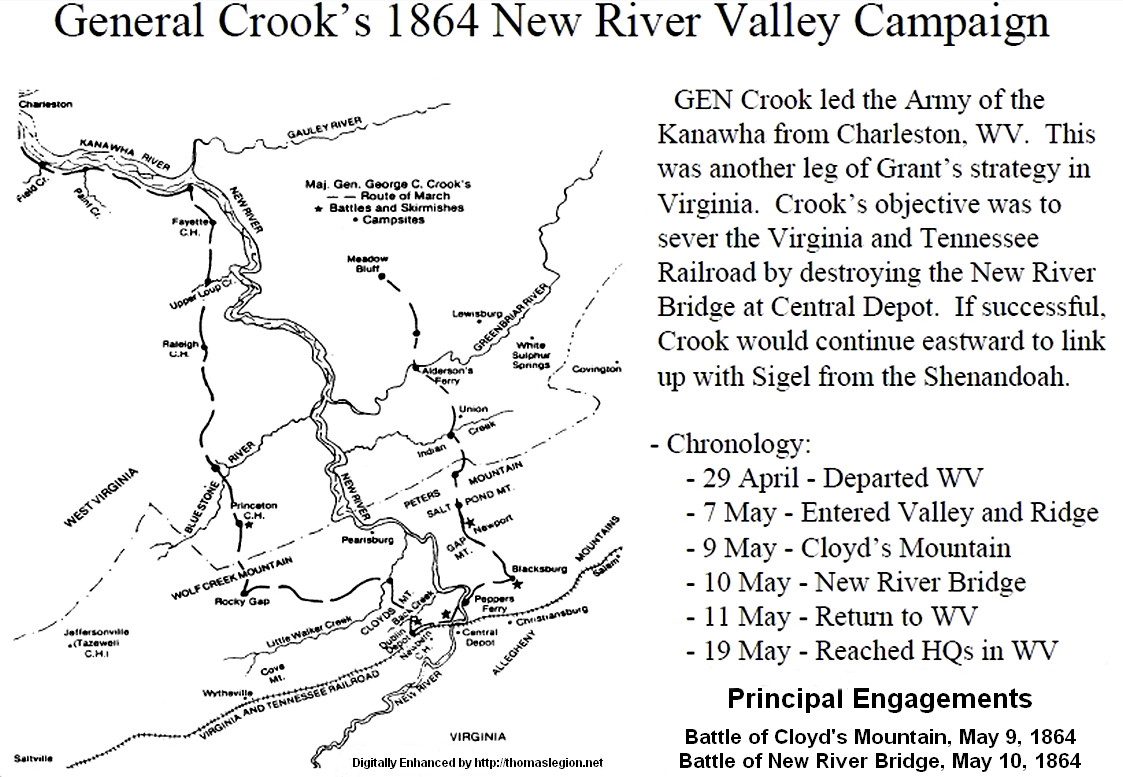
|
| New River Valley Campaign Route and Battles |
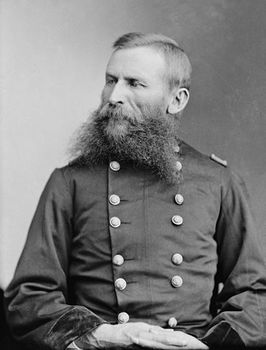
|
| General George Crook |
(Right) George R. Crook (September 8, 1828 – March 21, 1890) was a
graduate of West Point and career United States Army officer. He gained fame for his distinguished service during the American
Civil War as well as notoriety during the Indian Wars.
Union Order of Battle
Kanawha Division — Brig. Gen. George Crook
- 1st Brigade — Col. Rutherford B. Hayes
- 23rd Ohio Infantry — Lt. Col. James M. Comly
- 36th Ohio Infantry — Col. Hiram F. Devol
- Detachment, 34th Ohio Infantry — (attached to 36th Ohio)
- 5th West Virginia Cavalry (Dismounted) — Colonel A. A. Tomlinson
- 6th West Virginia Cavalry (Dismounted)
- 2nd Brigade — Col. Carr B. White
- 12th Ohio Infantry — Col. J. D. Hines
- 91st Ohio Infantry — Col. John A. Turley
- 9th West Virginia Infantry — Col. Isaac H. Duval
- 14th West Virginia Infantry — Col. D. D. Johnson
- 3rd Brigade — Col. Horatio G. Sickel
- 3rd Pennsylvania Reserve Regiment — Capt. J. Lenhart
- 4th Pennsylvania Reserve Regiment — Colonel R. H. Woolworth (killed)
- 11th West Virginia — Col. Daniel Frost
- 15th West Virginia — Lt. Col. Thomas Morris
- Artillery — Capt. James R. McMillin
- 1st Ohio Battery — Lieut. G.P. Kirtland
- 1st Kentucky Battery — Capt. David W. Glassie
Confederate Order of Battle
Department of Southwestern Virginia — Brig. Gen. Albert G. Jenkins
(mortally wounded and captured); John McCausland
- 4th Brigade — Col. John McCausland
- 45th Virginia Infantry — Col. W.H. Browne
- 60th Virginia Infantry — Col. B.H. Jones
- 36th Virginia Infantry — Lt. Col. Thomas Smith (wounded) Maj.
William E. Fife
- 400 dismounted 10th Kentucky Cavalry (Diamond's)(May's)
- 45th Virginia Infantry Battalion — Lt. Col. H.M. Beckley
- Home Guards
- Artillery — Capt. T.A. Bryan (wounded)
- Botetourt (Va.) Artillery — Capt. H.C. Douthat
- Bryan's (Va.) Battery — Lieut. G.A. Fowlkes
- Ringgold (Va.) Battery — Capt. Crispin Dickenson
- Morgan's Brigade — Brig. Gen. John Hunt Morgan (brigade arrived late
and took part only in the retreat)
- 5th Kentucky Cavalry - Col. D. Howard Smith
Results
The Battle of Cloyd's Mountain involved infantry, cavalry, and artillery,
and was contested for seven hours, including savage hand-to-hand fighting that endured for one hour. Gen. Crook, pursuing
a critical objective of Gen. Grant himself, withdrew and destroyed the nearby New River Bridge on the morning of
May 10. The bridge was defended by remnant Confederate troops who exchanged cannon fire for some four hours. While the
hills and rugged terrain provided defilade, the cannonading served as covering fire for Union troops as they rushed
and set the bridge ablaze. During the exchange, a Rebel caisson was hit and several horses were killed, which denied the Confederates
the additional ammunition it needed to continue the fight. Absent many horses and having exhausted their ammunition,
the Confederates withdrew. The melee produced few casualties, including a Union soldier who, being mortally wounded, was
found to be a woman.
Casualties were high for the modest number of troops involved. Crook lost
688 men, roughly 11% of his force. The Confederates lost fewer men—538—but that totaled 23% of their total force.
With the Southern army routed, Crook was able to continue and destroy the Virginia and Tennessee Railroad at Dublin,
Virginia, and Averell was also able to destroy several railroad bridges along the same line, severing one of the Confederacy's
last vital lifelines and its only rail connection to East Tennessee.
Sources: Official Records of the War of the Rebellion; National Park Service;
Library of Congress; National Archives; Virginia Historic Landmarks Commission Staff (February 1975). "National Register of
Historic Places Inventory/Nomination: Back Creek Farm". Virginia Department of Historic Resources; Hoogenboom, Ari (1995).
Rutherford B. Hayes: Warrior & President. University Press of Kansas; Kennedy, Frances H., editor, The Civil War Battlefield
Guide: Second Edition (1998).

|

|

|

